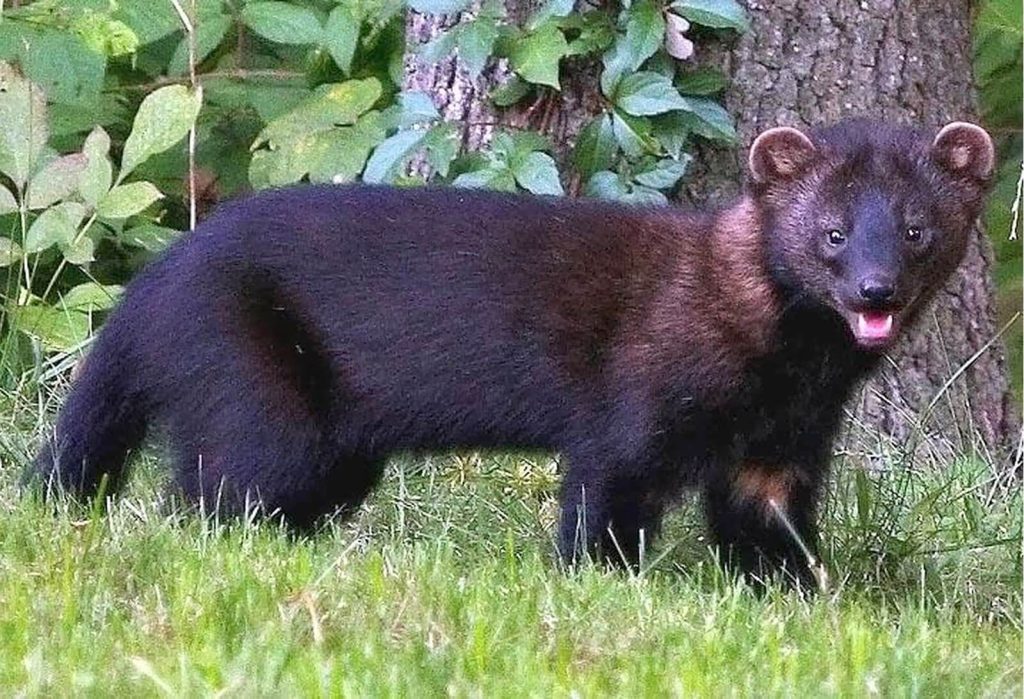When individuals come across the term fisher cat, what comes to mind is a large wild feline. The fisher is, however, by no means a cat. It is a medium-sized mammal that is related to weasels, which are agile, skilled hunters, and secretive. Fishers are native to North America, and they are of significance to the forest ecosystems.
What Is a Fisher?
Fisher (Pekania pennanti) belongs to the mustelid family, which also comprises weasels, mink, and otters. Adults are 2-5 kilograms (4-11 pounds) in weight, and their bodies are long and slender and with thick dark brown fur. These are good climbers and swimmers and can therefore be considered versatile hunters in the woods as well as close to the waterways.
The fisher cat is so named because the settlers who saw them saw them eating fish and other animals, a source that constitutes a minor part of their diet.
Habitat and Range
The fishers can be largely found in the thick forests of North America, or between the northeastern United States to parts of Canada, and even the Pacific Northwest. They like conifer and mixed forests that are dense in number and trees that help in climbing and covering.
These are solitary and territorial animals. The home of an individual fisher may cover several square kilometers. They are crepuscular, meaning that they are most active in the dawn and at dusk, hence are rarely seen.
Diet and Hunting Skills
Fishers are predators and opportunistic. Their diet includes:
Little rodents such as squirrels, rabbits, and mice.
Birds and eggs
Insects
Occasionally fish
Hunting the porcupines is one of the greatest arts of the fisher. Not many creatures would want to come close to a porcupine; however, fishers can be fast, nimble, and cunning. They also tend to strike the face and do not hit the quills, and can effectively attack porcupines, which is not an easy accomplishment in the animal world.
Behaviour and Adaptations
Fishers are great climbing fish. They make use of trees for hunting and escaping. Their semi-retractable claws enable them to cling to the branches, and their lengthy bushy tails bring about balance.
They are also night predators, which have a sharp sense of smell and hearing. Fishers are territorial, and they indicate their territory via scent glands, vocalization, and body language as their primary modes of communication.
Reproduction and Lifespan
The mating season takes place from early spring to late winter. The gestation period of females is approximately 10 months and yields 1-4 kits. Interestingly, fishers have slowed down implantation, such that the fertilized egg does not instantly attach to the uterus wall such so kits can be brought to birth when they have a high chance of survival.
Fishers have a lifespan of 8 to 12 years in the wild, but this may be shortened by predation, habitat destruction, and automobile accidents.
Conservation Status
In the past, fishers were heavily harvested for get fur, and this resulted in a population decline. In certain regions, particularly in the northeastern United States and parts of Canada, conservation acts and hunting rules have made populations recover.
Nevertheless, they are also sensitive to habitat destruction, especially logging and urban sprawl. Maintaining healthy fisher populations would depend on having large, mature forests with extensive cover.
Interesting Facts of Fishers
Fish, although it is a minor component of their diet, are included.
Fishers can descend trees headfirst, which is not a common technique in mammals.
They are also among the few predators that can hunt porcupines and be successful.
Their elusive reputation is owed to the large home range and scarcity of sight.
FAQs About Fisher Cats
1. Do fishers pose any threat to people?
Fishers tend to be timid, and they do not like people. They can protect themselves in case they are cornered; however, attacks on people are very infrequent.
2. Do fishers make good pets?
No. Fishers are wild animals, and they have certain needs and behaviors that cannot be adjusted in a home setting. Finding a home to keep them is a crime in most states.
3. What do fishers have to do but eat porcupines?
Small mammals, birds, eggs, insects, and, at times, fish or fruits are also added to their menu depending on the season.
4. Whither shall I find a fisher in the wild?
Fishers are shy and predominantly night dwellers. They are most common in deep forests in the north of the U.S., Canada, or the Pacific Northwest, where there is a stream or river.
5. What can I do to help preserve fishers?
The fisher population can be conserved by supporting forest conservation, preventing habitat destruction, and educating other people on the importance of conserving them.
Conclusion
The Fisher cat is an interesting and evasive predator that is significant in North American forests. Fishers are wise, witty, and unexpectedly brave enough to prove that size is not everything in the matter of survival. By preserving their habitats, these elusive predators will still be able to survive to the next generation.


